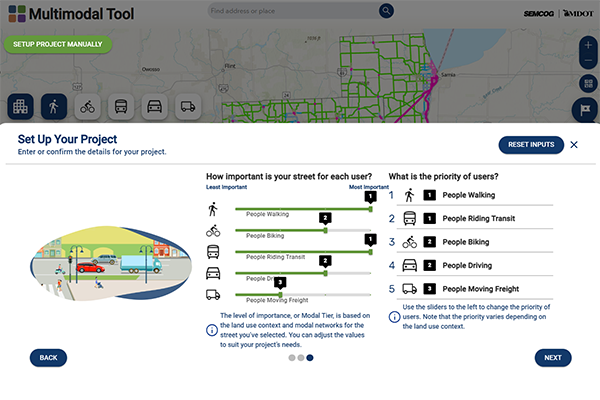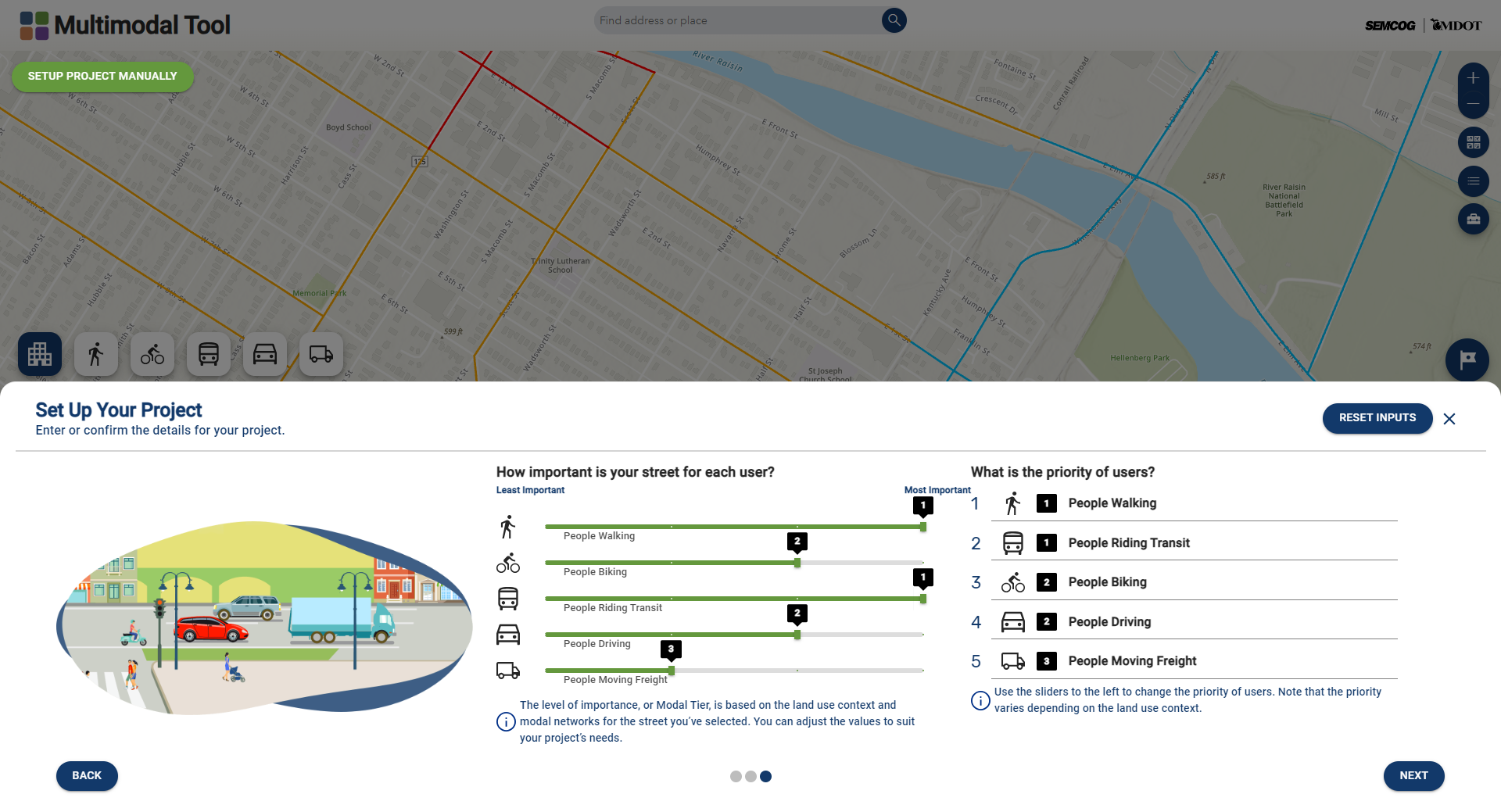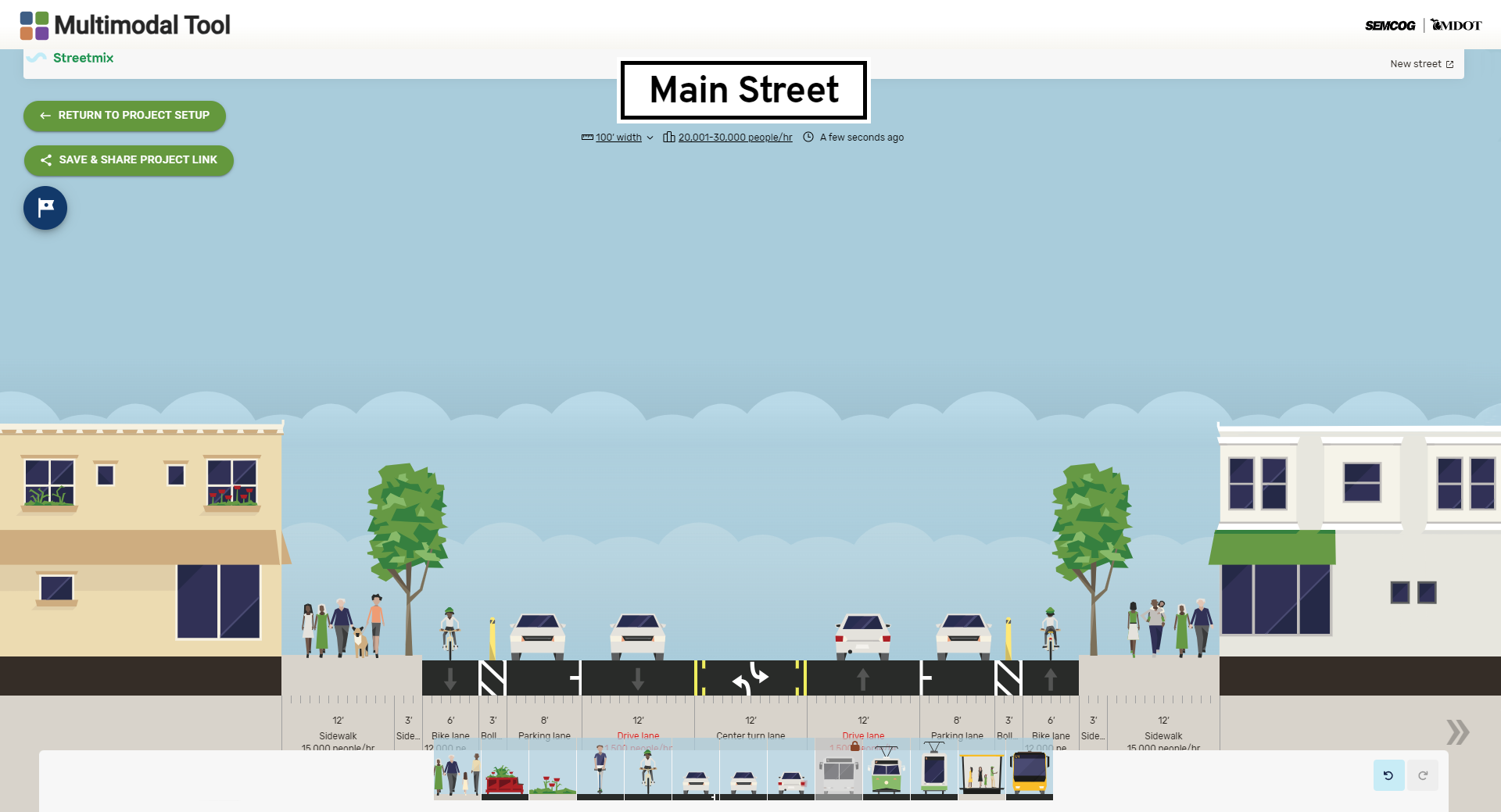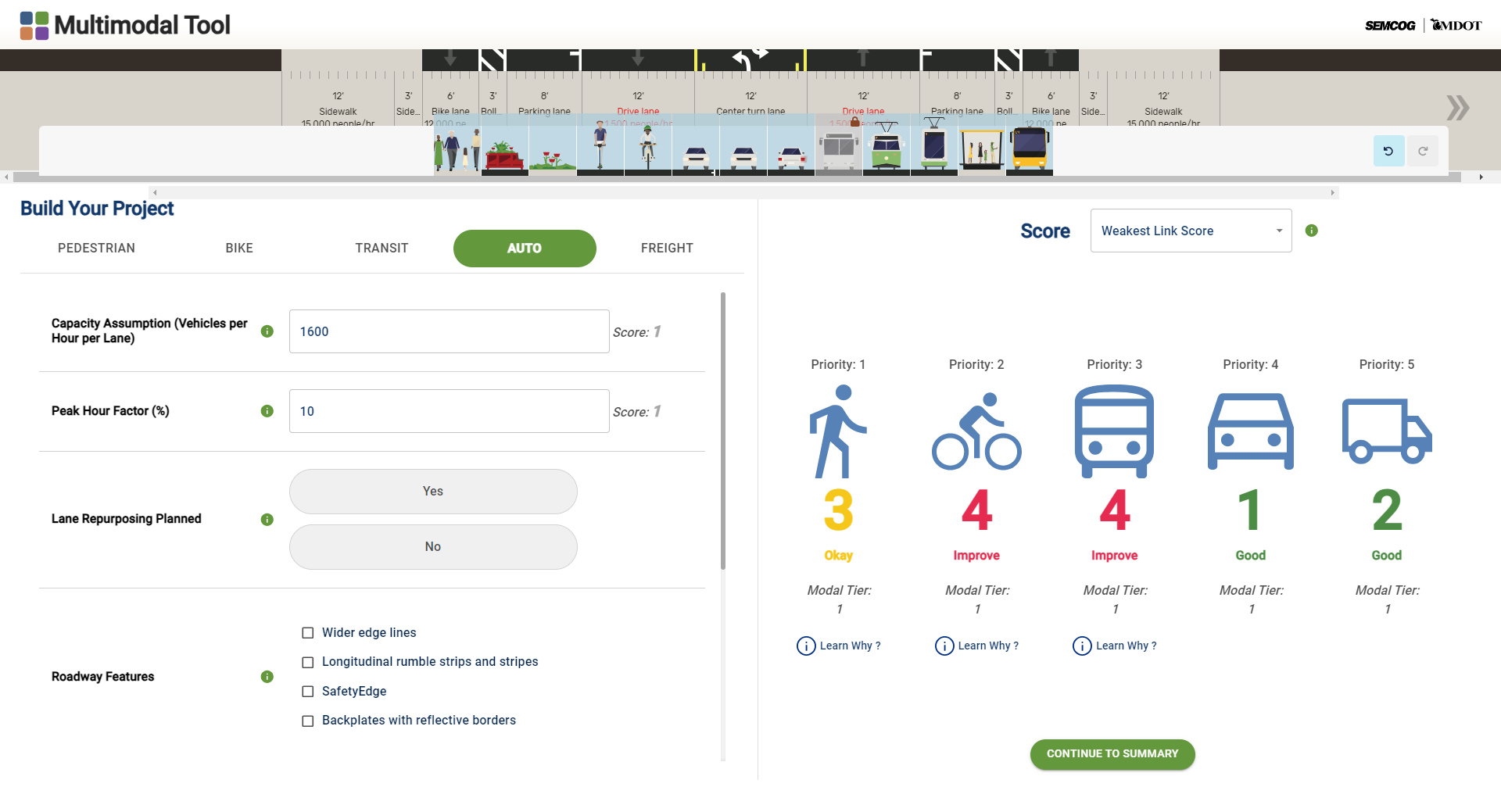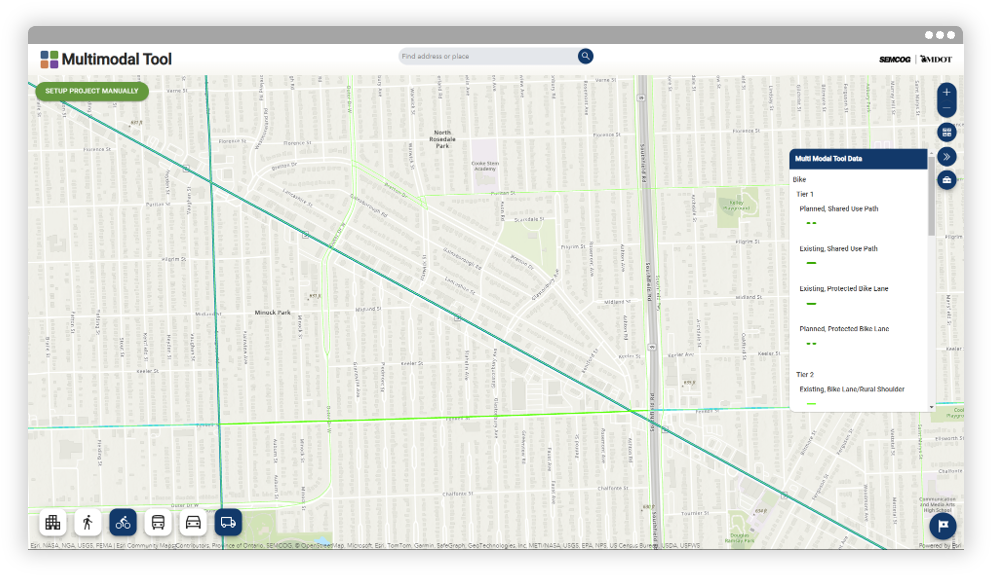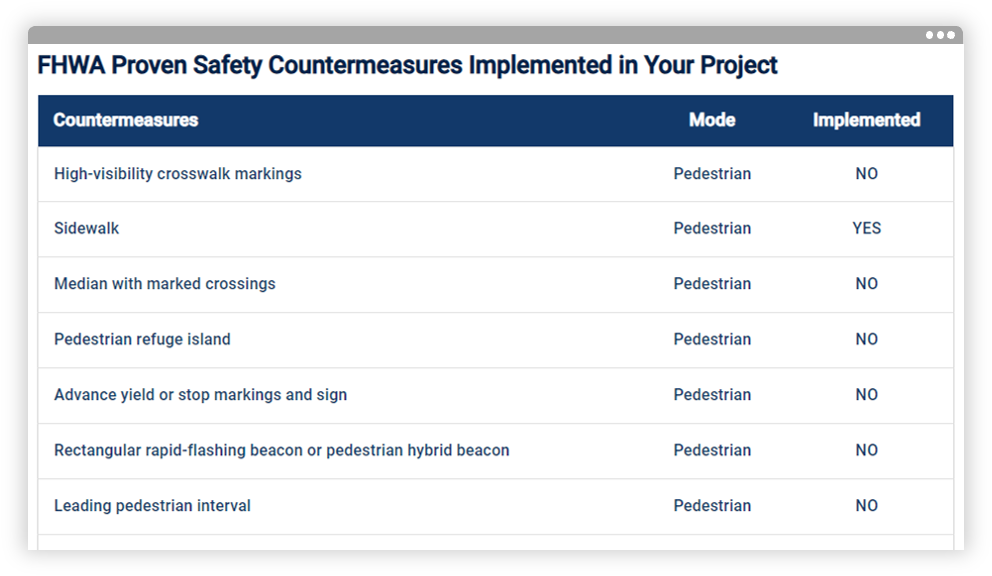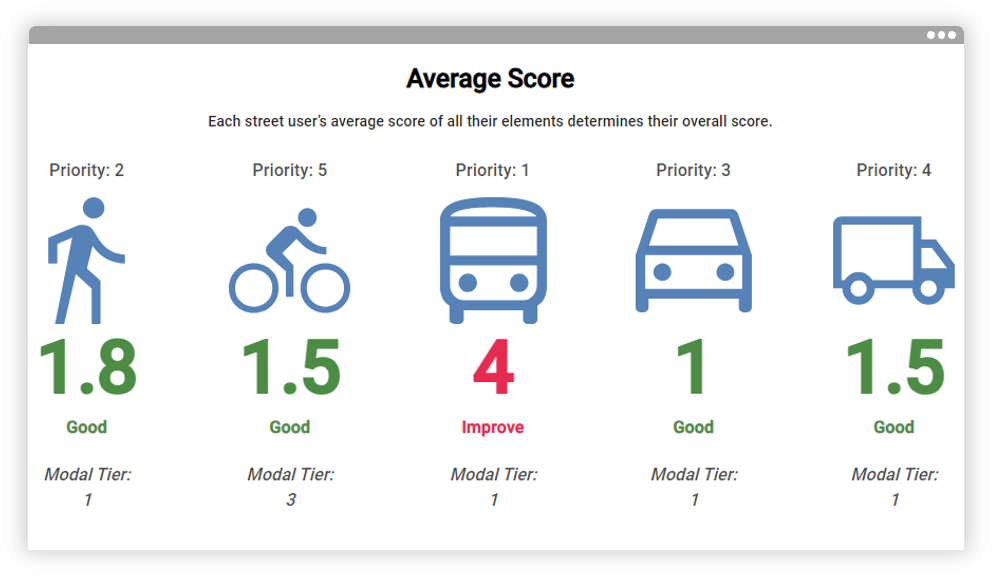Fast-Tracking Multimodal Analysis
A Layered Network Hack for US & Global Streets
Fast-Tracking Multimodal Analysis
A Layered Network Hack for US & Global Streets
Want some time back? There’s a new way to design and evaluate complete streets. With the spotlight on safe, convenient, and affordable transportation networks, layered network design has become one of the most valuable advances in balancing the needs of all people. Whether the priority is walking, biking, driving, riding transit, or moving freight, layered networks help accommodate competing travel modes in constrained rights-of-way and across different land uses. By prioritizing and overlaying these modal networks, practitioners can create comprehensive systems that serve everyone’s needs, reduce potential conflicts, and enhance safety and efficiency. The challenge, however, has been the time-consuming comparative analysis, until now.
Designing them in a fraction of the time is.
Test Your Street Design in Real-Time.
From vehicle spaces to people spaces, practitioners often find themselves on spreadsheet rabbit trails or toggling between apps to access the important values and comparisons they need. The SEMCOG/MDOT Multimodal Tool is a first-of-its-kind web application that streamlines the design and evaluation of complete streets with maximum efficiency. Incorporating a built-in lens for safety and equity, it provides agencies a solid technical basis to justify the design or reconfiguration of streets by accommodating all modes on their appropriate networks.
Powered by multiple datasets and a simple interface, beginners and experts alike can:
View Modal Networks
Look at different modal networks across the Southeast Michigan region, land use contexts, and select specific project corridors.
Courtesy: SEMCOG/MDOT
Apply a Manual Option
Outside of Southeast Michigan, plug in street values and prioritize road users. Versatile enough for use on any street in the US or worldwide.
Test Street Designs
Design and modify street cross-sections for any geography using Streetmix and a control panel of options.
Their Keen Idea. Our Power Driving It.
Our long-standing partnership with the Southeast Michigan Council of Governments (SEMCOG) and the Michigan Department of Transportation (MDOT) to improve street safety and livability led us to develop this groundbreaking tool. From SEMCOG’s vision, we crafted the structure to bring this effort to life. Along with Blue Raster, who helped develop the tool’s user-friendly interface, and the boots-on-the-ground expertise of C2G, we included a multi-disciplinary team from our national bench of experts. Applying our in-house tool, StreetScore+, we created an application that can plan, test, and evaluate designs and a variety of performance measures at once. Key utilizations include:
Corridor Planning
The tool is great for seeing how modal networks and land use contexts overlap.
Courtesy: SEMCOG/MDOT
Grant Applications
The tool itemizes FHWA Proven Safety Countermeasures implemented in your project.
The Tool in Action.
In Michigan’s Detroit-area, MDOT used the SEMCOG/MDOT Multimodal Tool to evaluate nine conceptual alternatives for the Gratiot Avenue Planning and Environmental Linkages Study. Metrics from the tool quickly revealed how well each alternative served the various travel modes, immediately highlighting which options fell short of the project’s goals. By efficiently narrowing the list from nine to three options, the team saved significant amounts of time and was able to concentrate its limited analytical resources on the most promising complete streets alternatives for Gratiot Avenue.
“The SEMCOG/MDOT Multimodal Tool translates planning guidebooks into real-world applications. It provides a framework for determining project priorities with stakeholders and evaluating street designs with multimodal performance measures. Proven valuable in corridor planning and community engagement in Southeast Michigan, it will also support grant applications and project evaluations.” – Jenya Abramovich, Planner, SEMCOG
Through this open–access tool, communities now have a framework to prioritize and manage competing travel modes, meet operational standards, and provide strong technical justification for comprehensive roadway plans. If you or your agency is looking for assistance using data-substantiated performance measures to create technical justification for your multimodal or layered network design, let’s talk.

Cullen McCormick
Senior Associate

Brad Strader
Director of Planning, C2G

Matthew Ridgway
Principal
Email Me

Jenya Abramovich
SEMCOG Transportation Planner

Alex Bourgeau
Manager Modeling and Mobility at SEMCOG

